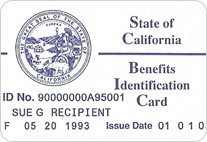Proposition 38, one of two new tax proposals to fund education
Proposition 38, Tax to Fund Education and Early Childhood Programs, financed largely by L.A. lawyer Molly Munger, is one of two initiatives that proposes to raise taxes to fund education. The other, Proposition 30, is Governor Jerry Brown’s proposal. Both cannot pass since each contains language that only the measure with the greatest number of “Yes” votes will become law.
Proposition 38 raises income taxes on most Californians. The rate and amount of that increase is dependent on their income brackets. Proposition 30 raises taxes on incomes of only those making more than $250,000 and includes a 1⁄4-cent increase in state sales tax. Both propositions would go into effect for stated finite periods and thus have sunset provisions.
Another key difference is that Proposition 38 revenue goes to a dedicated fund whose purpose is to fund K through 12, early childhood programs and pay down the state debt. Proposition 30 tax revenue goes to the General Fund with directions on what amounts go to K-12 and community colleges.
Failure by voters to pass Proposition 30 triggers automatic state budget cuts that dramatically reduce education funding; Proposition 38 contains no such automatic triggers.
Proposition 38 is one of few initiatives in this election opposed by both the Republican and Democratic parties, although their reasons are different. The Democratic Party backs Proposition 30. It opposes Proposition 38 because it cancels the initiative they back. With Republicans, both 30 and 38 are opposed because of the tax hikes.
The following four points elaborate on Proposition 38’s specifics:
- Increases personal tax rates on annual earnings over $7,306 using a sliding scale from 0.4 percent for the lowest individual earners to 2.2 percent for those earning over $2.5 million. The increase remains in effect for 12 years.
- During first four years, Proposition 38 allocates 60 percent of revenues to K-12, 10 percent to early childhood programs, and 30 percent to paying down state debt. In fiscal years 5 through 12, it allocates 85 percent of revenues to K-12 and 15 percent to early childhood.
- Specifies K-12 funds must be used on pupil-specific, per pupil basis, subject to local control and direction, audits and public input.
- Prohibits state from raiding or directing funds for use other than as prescribed.
The nonpartisan Legislative Analyst’s Office projects Proposition 38 will generate annual revenues of about $10 billion, which will increase over time. In each of the initial years, about $6 billion would be used for K-12, $1 billion for early childhood programs, and $3 billion to pay down state debt. For fiscal years five through 12, the amounts spent on school and early childhood programs would be higher, since state debt reduction payments are only for the first four years.
As background, currently state personal income tax rates range from 1 percent to 9.3 percent on portions of a taxpayer’s income in each of several income brackets (marginal tax rates). Proposition 38 increases personal income tax rates on all but the lowest bracket, for the next 12 years. These higher tax rates would, according to the LAO, affect roughly 60 percent of California taxpayers. As an example, for those earning $38,000 to $48,000 annually, the marginal tax rate would increase from 8 to 9.4 percent. For those earning from $48,000 to $100,000, the marginal rate would increase from 9.3 to 10.9 percent.
According to Munger, most are taxed because all benefit. She states that a couple earning $45,000 after deductions would pay on average $146 more per year; a couple earning $750,000 would pay on average about $12,500 more per year during the time the law is in effect.
Current law provides school funding through a formula based on Proposition 98 minimum guarantees through a combination of state general fund and local property tax revenues. Roughly 70 percent of school funding using this existing formula can be used for any educational purpose the local school governing board decides.
Under Proposition 38, new revenues through increased income taxes would be in addition to Proposition 98 general fund support. Proponents of the measure claim that under Proposition 30, increased revenues could be used to backfill Proposition 98 fund payments delayed from prior year budget reduction reasons, thereby resulting in little increased funding for schools.
The LAO estimates that until the end of fiscal 2016-17, at least 30 percent of increased tax revenue, roughly $3 billion annually, would be used to pay down state debt and provide state general fund savings, thereby freeing up more money for public programs and making it easier to balance the state budget in these years.
In addition to Munger, supporters include the California Parent Teachers Association. Opponents include the California Democratic and Republican parties and the California Chamber of Commerce.
The latest Field poll indicates Proposition 38 would be defeated by three percent, but 15 percent of the voters are undecided. In July, the “yes” and “no” were receiving equal support. We will review Proposition 30, Governor Brown’s education initiative, in a subsequent article.



